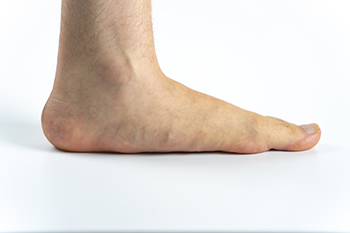
When a person has flat feet, it means that the longitudinal arch of the foot, which runs along the sole of the foot, has failed to develop properly or has collapsed. It can affect one or both feet, depending on the cause. Children are generally born with flat feet, but the arch normally develops by the time they reach 5 years of age. Flat feet may be inherited or caused by an injury. They also may be the result of an underlying medical condition, such as rheumatoid arthritis, stroke, or diabetes. Most people do not experience pain from having flat feet, but fatigue is often a symptom. Surgery is rarely necessary. A number of exercises can help to strengthen the feet. Two common treatments for flat feet are wearing shoes that offer good arch support and having orthotic devices inserted in your shoes. For help in dealing with flat feet, or to order custom orthotics, please visit with a podiatrist.
Flatfoot is a condition many people suffer from. If you have flat feet, contact Dr. Joshua David Scoll from Pennsylvania. Our doctor will treat your foot and ankle needs.
What Are Flat Feet?
Flatfoot is a condition in which the arch of the foot is depressed and the sole of the foot is almost completely in contact with the ground. About 20-30% of the population generally has flat feet because their arches never formed during growth.
Conditions & Problems:
Having flat feet makes it difficult to run or walk because of the stress placed on the ankles.
Alignment – The general alignment of your legs can be disrupted, because the ankles move inward which can cause major discomfort.
Knees – If you have complications with your knees, flat feet can be a contributor to arthritis in that area.
Symptoms
- Pain around the heel or arch area
- Trouble standing on the tip toe
- Swelling around the inside of the ankle
- Flat look to one or both feet
- Having your shoes feel uneven when worn
Treatment
If you are experiencing pain and stress on the foot you may weaken the posterior tibial tendon, which runs around the inside of the ankle.
If you have any questions please feel free to contact one of our offices located in Philadelphia, Bensalem, and Fairless Hills, PA . We offer the newest diagnostic and treatment technologies for all your foot and ankle needs.

